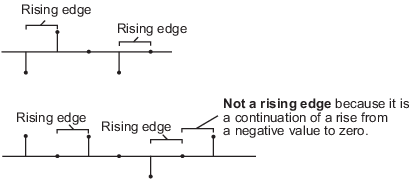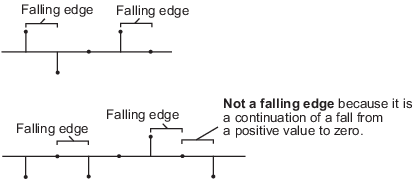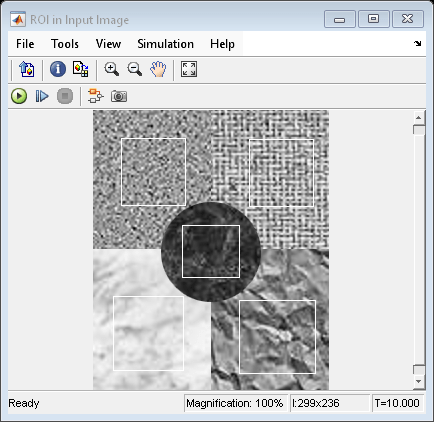2-D Standard Deviation
Compute standard deviation of input or sequence of inputs
Libraries:
Computer Vision Toolbox /
Statistics
Description
The 2-D Standard Deviation block computes the standard deviation of an input array. The input can be a 1-D vector, 2-D matrix, or an N-D-array. The block can compute standard deviation along a specified dimension of the input or the entire input. If you select the Running standard deviation parameter, the block can also track the standard deviation in a sequence of inputs over a time period.
Examples
Compute Standard Deviation of ROIs
Compute the standard deviation of regions-of-interest (ROIs) in the input image. The input image is composed of different texture regions and ROIs are selected to contain these texture regions.
Ports
Input
Input array, specified as a vector, matrix, or N-D- array. This port is unnamed until you select the Enable ROI processing parameter.
Data Types: single | double
Reset port, specified as a scalar. This port specifies the event that causes the block to reset the running standard deviation. The sample time of the Rst input must be a positive integer and a multiple of the input sample time.
Dependencies
To enable this port, select the Running standard deviation
parameter and set the Reset port parameter to
Rising edge, Falling edge,
Either edge, or Non-zero
sample.
Data Types: single | double | int8 | int16 | int32 | uint8 | uint16 | uint32 | Boolean
Region of interest (ROI), specified as a four-element vector, m-by-4 matrix, or M-by-N matrix. The input value to this port depends on the ROI type parameter.
Note
You can use the ROI port only if the input is a 2-D
image.
Dependencies
To enable this port, set the Find the standard deviation value
over parameter to Entire input and select
the Enable ROI processing parameter.
Data Types: single | double | int8 | int16 | int32 | uint8 | uint16 | uint32 | Boolean | fixed point
Label matrix, specified as a matrix of nonnegative integers. The label matrix represents the objects in an image. The pixels labeled 0 are the background. The pixels labeled 1 make up one object; the pixels labeled 2 make up a second object; and so on. The size of the label matrix must be the same size as the 2-D input.
Dependencies
To enable this port, select the Enable ROI processing
parameter and set the ROI type parameter to
Label matrix.
Data Types: uint8 | uint16 | uint32
Label values of ROIs, specified as a M-element vector. The value of M can be less than or equal to the number of objects that are labeled in the label matrix.
Dependencies
To enable this port, select the Enable ROI processing
parameter and set the ROI type parameter to
Label matrix.
Data Types: uint8 | uint16 | uint32
Output
Computed output standard deviation, returned as a scalar, vector, matrix, or N-D-array. The size of the returned output standard deviation depends on the size of the input, and the settings for the Running standard deviation and Find the standard deviation value over parameters.
This port is unnamed until you select the Output flag indicating if ROI
is within image bounds and the ROI type parameter is
set to Rectangles, Lines, or
Label matrix.
If Running standard deviation Is Cleared
You can compute standard deviation along any specified dimension of the input or the entire input. The output is a:
Scalar if the input is of any size and the Find the standard deviation value over parameter is set to
Entire input.Vector if the input is a matrix and the Find the standard deviation value over parameter is set to any one of
Each row,Each column, andSpecified dimension. In this case, the Dimension value forSpecified dimensioncan be either 1 or 2.Matrix if the input is a 3-D array and the Find the standard deviation value over parameter is set to
Specified dimensionand the Dimension value is 3.N-D array if the input is an N-D array and the Find the standard deviation value over parameter is set to an option other than
Entire input.If you compute standard deviation along the Nth dimension of the input, then the returned output is an (N-1)-D array. In this case, the Dimension value for
Specified dimensionis set to N.Example: For a 3-D input array of size M-by-N-by-P, the dimension of the returned output is:
1-by-N-by-P if you set the Find the standard deviation value over parameter to
Entire row.M-by-1-by-P if you set the Find the standard deviation value over parameter to
Entire column.M-by-N if you set the Find the standard deviation value over parameter to
Specified dimensionand the Dimension value to 3.
If Running standard deviation Is Selected
When you select the Running standard deviation parameter, the block computes the standard deviation of each sample in the input with respect to all previous samples. The output is of the same size as the input.
Data Types: single | double | int8 | int16 | int32 | uint8 | uint16 | uint32 | fixed point
Validation for ROI, returned as 0 or 1. The output value signifies if all of the ROIs specified at the input lie within the image bounds. The output value depends on the values of the Output and ROI Type parameters.
| ROI Type | Output | Output from Flag port | Description |
| Individual statistics for each
ROI | 0 | ROI is completely outside the input image. |
| 1 | ROI is either completely or partially inside the input image. | ||
Single statistic for all
ROIs | 0 | ROI is completely outside the input image. | |
| 1 | ROI is either completely or partially inside the input image. | ||
Label matrix | Individual statistics for each
ROI | 0 | Label number is not in the label matrix. |
| 1 | Label number is in the label matrix. | ||
Single statistic for all
ROIs | 0 | None of the label numbers are in the label matrix. | |
| 1 | At least one of the label numbers is in the label matrix. |
Note
If the ROI is partially outside the image, the block computes the standard deviation values only for the portion of the ROI that lies within the image bounds.
Dependencies
To enable this port, select the Output flag indicating if ROI is
within image bounds parameter and set the value of ROI
type parameter to Rectangle,
Lines, or Label
Matrix.
Parameters
Main Tab
Select to track the standard deviation of successive inputs to the block. In this mode, the block treats each element as a channel.
Specify when the block detects a reset event. The block resets the running standard deviation when a reset event is detected at the optional Rst port. The reset sample time must be a positive integer and a multiple of the input sample time.
Specify the reset event as:
Noneto disable the Rst port.Rising edgeto trigger a reset event when the Rst input does one of the following:Rises from a negative value to either a positive value or zero
Rises from zero to a positive value, where the rise is not a continuation of a rise from a negative value to zero

Falling edgeto trigger a reset event when the Rst input does one of the following:Falls from a positive value to either a negative value or zero
Falls from zero to a negative value, where the fall is not a continuation of a fall from a positive value to zero

Either edgeto trigger a reset event when the Rst input is aRising edgeorFalling edge.Non-zero sampleto trigger a reset event at each sample time, when the Rst input is not zero.Note
When running simulations in the Simulink® multitasking mode, reset signals have a one-sample latency. Therefore, when the block detects a reset event, there is a one-sample delay at the reset port rate before the block applies the reset.
Dependencies
To enable this parameter, select the Running standard deviation parameter.
Specify the dimension of the input along which the block computes the standard deviation.
Entire input— Computes standard deviation over the entire input.Each row— Computes standard deviation over each row.Each column— Computes standard deviation over each column.Specified dimension— Computes standard deviation over the dimension specified in the Dimension parameter. By default, the Dimension parameter is set to 1 and the output is the same as when you selectEach column.
Dependencies
To enable this parameter, clear the Running standard deviation parameter.
Specify the dimension of the input array over which the standard deviation is computed as a one-based value. The value of this parameter is set to 1..
Dependencies
To enable this parameter, set the Find the standard deviation value
over parameter to Specified dimension.
ROI Processing
Select to calculate standard deviation within a particular ROI in the image.
Note
Full ROI processing is available only if you have a Computer Vision Toolbox™ license. If you do not have a Computer Vision Toolbox license, you can still use ROI processing, but the ROI
type is limited to Rectangles.
Dependencies
To enable this parameter, set the Find the standard deviation value
over parameter to Entire input.
Specify the type of ROI that represents the regions in the image over which the block computes the standard deviation. The type of ROI can be a rectangle, line, label matrix, or a binary mask.
| Parameters | Description | |
| ROI type | Inputs to the ROI port | |
Rectangles |
|
|
Lines |
|
|
Label matrix | M-by-N matrix | Matrix of the same size as the input image. The matrix contains label values that represent different objects in an image. The pixels labeled 0 are the background. The pixels labeled 1 make up one object; the pixels labeled 2 make up a second object; and so on. |
Binary mask | M-by-N matrix | Matrix of the same size as the input image. The binary mask classifies image pixels as belonging to either the region of interest or the background. The mask pixel values of 1 indicate that the image pixel belongs to the ROI. The mask pixel values of 0 indicate that the image pixel is part of the background. |
Dependencies
To enable this parameter, select the Enable ROI processing parameter.
Specify the portion of the ROI from which the block has to calculate 2-D standard deviation. The ROI portion is either the entire ROI or the ROI perimeter.
Dependencies
To enable this parameter, select the Enable ROI processing
parameter and set the ROI type parameter to
Rectangles.
Specify whether to calculate 2-D standard deviation individually for each ROI or for the entire ROI.
If you select
Individual statistics for each ROI, the block outputs a vector of standard deviation values. The size of the output vector is equal to the number of ROIs.If you select
Single statistic for all ROIs, the block outputs a scalar value. The scalar value represents the statistical value for all the specified ROIs.
Dependencies
To enable this parameter, select the Enable ROI processing
parameter and set the ROI type parameter to
Rectangles, Lines, or
Label matrix.
Select to expose the Flag port. For a description of the Flag port output, see Flag.
Dependencies
To enable this parameter, select the Enable ROI processing
parameter and set the ROI type parameter to
Rectangles, Lines, or
Label matrix.
Data Types Tab
For details on the fixed-point block parameters, see Specify Fixed-Point Attributes for Blocks (DSP System Toolbox).
Select this parameter to prevent the fixed-point tools from overriding the data types you specify in this block. For more information, see Lock the Output Data Type Setting (Fixed-Point Designer).
Block Characteristics
Data Types |
|
Multidimensional Signals |
|
Variable-Size Signals |
|
Extended Capabilities
C/C++ Code Generation
Generate C and C++ code using Simulink® Coder™.
Version History
Introduced in R2011b
See Also
2-D
Mean | var | 2-D
Variance
MATLAB Command
You clicked a link that corresponds to this MATLAB command:
Run the command by entering it in the MATLAB Command Window. Web browsers do not support MATLAB commands.
Select a Web Site
Choose a web site to get translated content where available and see local events and offers. Based on your location, we recommend that you select: .
You can also select a web site from the following list
How to Get Best Site Performance
Select the China site (in Chinese or English) for best site performance. Other MathWorks country sites are not optimized for visits from your location.
Americas
- América Latina (Español)
- Canada (English)
- United States (English)
Europe
- Belgium (English)
- Denmark (English)
- Deutschland (Deutsch)
- España (Español)
- Finland (English)
- France (Français)
- Ireland (English)
- Italia (Italiano)
- Luxembourg (English)
- Netherlands (English)
- Norway (English)
- Österreich (Deutsch)
- Portugal (English)
- Sweden (English)
- Switzerland
- United Kingdom (English)

